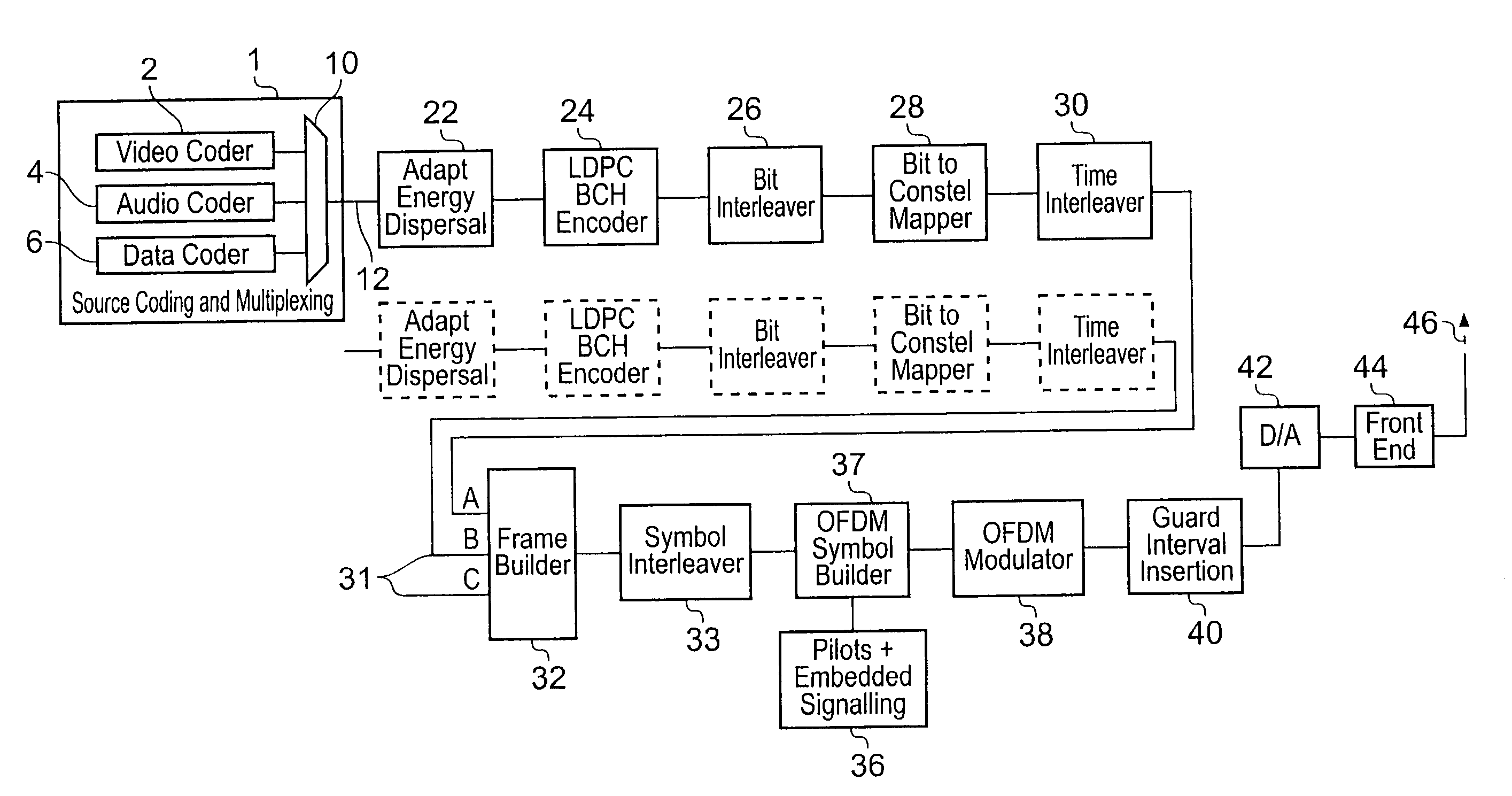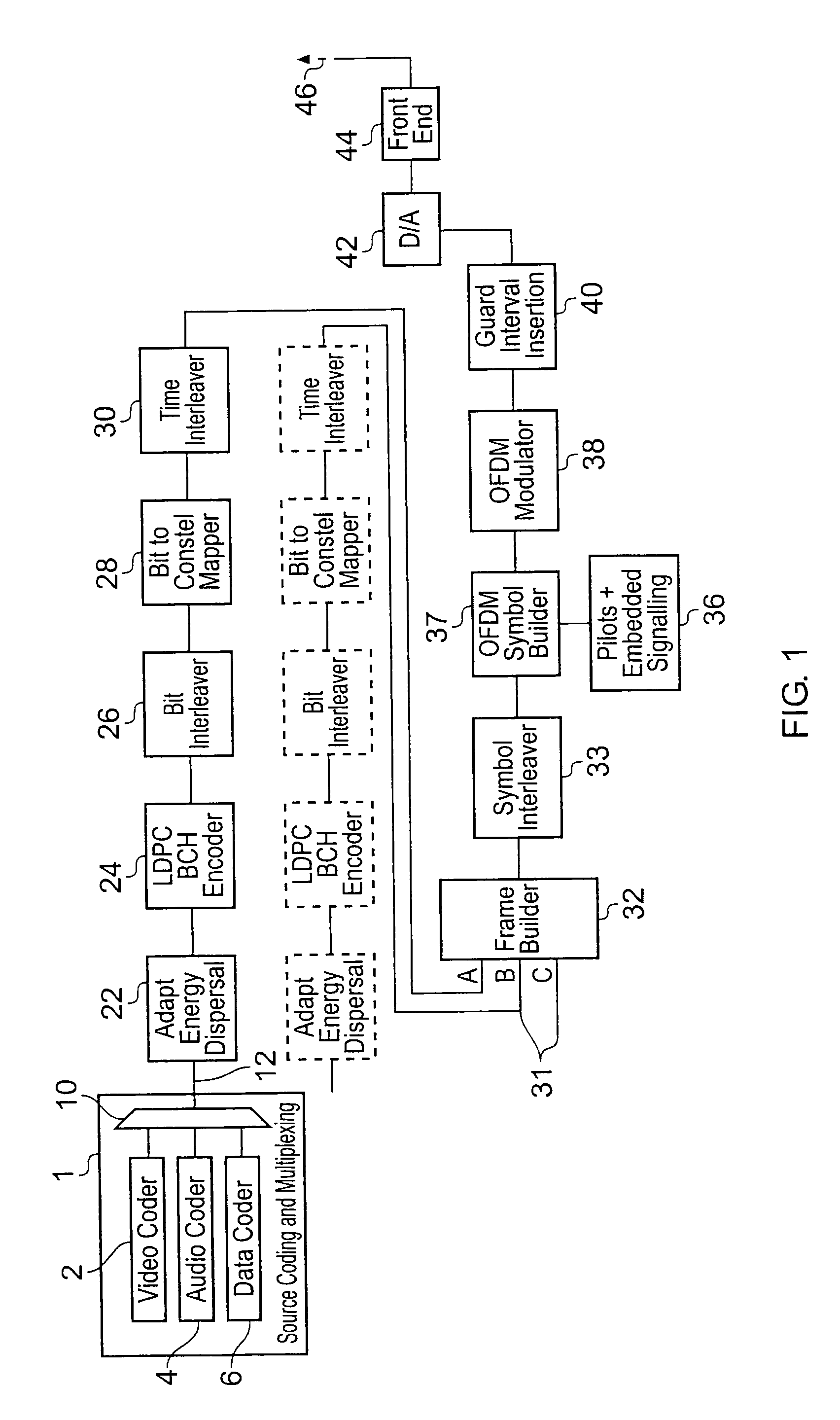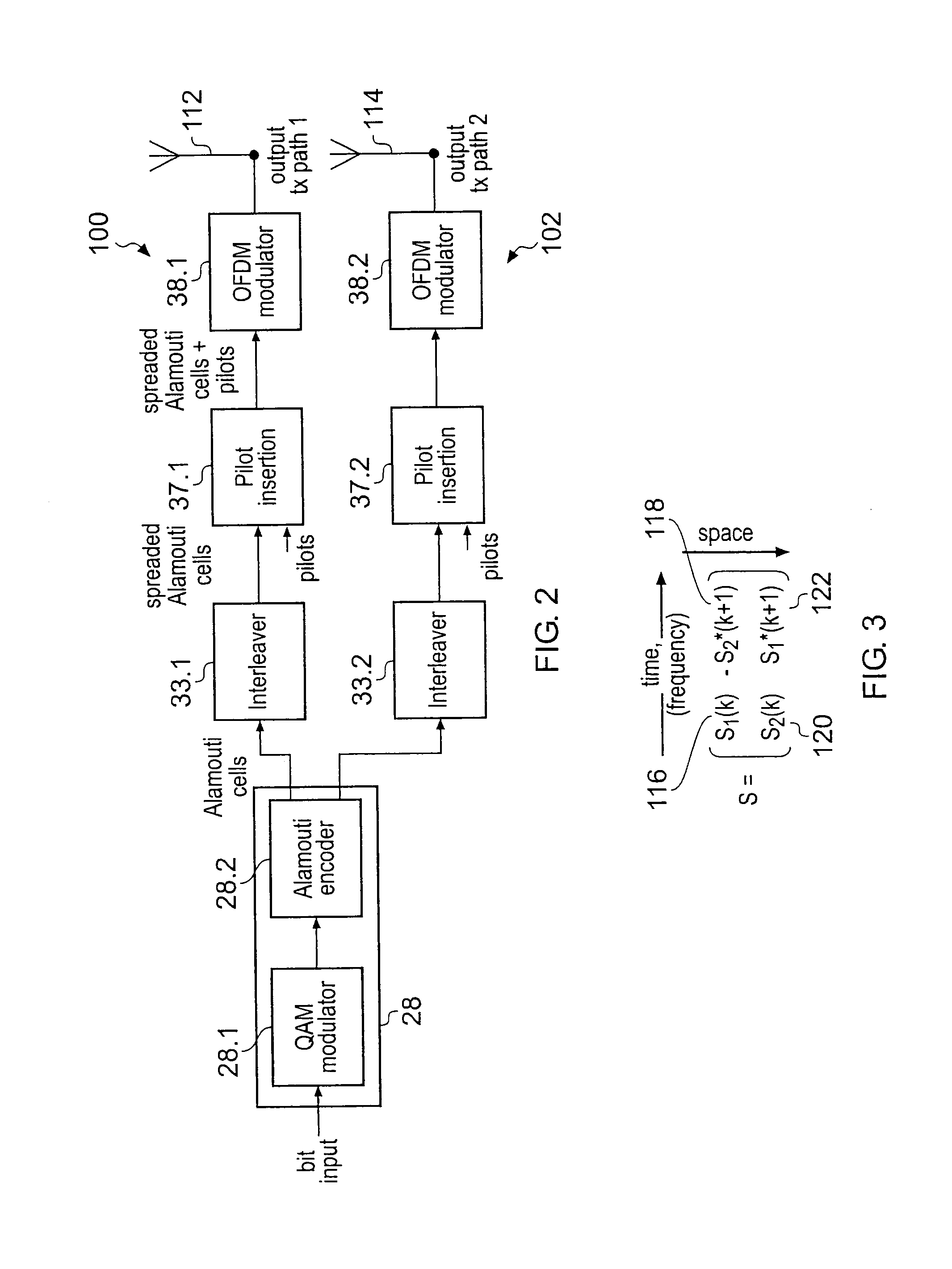Transmitting apparatus and method, and receiving apparatus and method
a technology of receiving apparatus and transmitting apparatus, which is applied in the direction of selective content distribution, orthogonal multiplex, pulse technique, etc., can solve the problems of substantial performance degradation, floor in the bit error rate/signal-to-noise ratio relationship, etc., and achieve the effect of improving the encoding performance and simplifying the implementation and therefore the cost of the transmitter and receiver
- Summary
- Abstract
- Description
- Claims
- Application Information
AI Technical Summary
Benefits of technology
Problems solved by technology
Method used
Image
Examples
example transmitter
[0041]An example transmitter which utilises the present technique is shown in FIG. 2, which includes parts of the transmitter shown in FIG. 1, which are relevant to the explanation of the present technique. Thus some parts of the DVB-T2 transmitter shown in FIG. 1 have been omitted for clarity. In FIG. 2, the data to be transported is received by the bit to constellation mapper 28, which forms the data to be transported by an OFDM symbol or symbols into pairs of symbols.
[0042]As will be explained below, the data symbols are formed into pairs because the space time / frequency block codes used are Alamouti codes. As will be explained, the Alamouti encoding can be done either in space time or space frequency. As such the pairs of symbols formed within a QAM modulator 28.1 are either transported by the same OFDM symbol using different sub-carriers, or transported using two different OFDM symbols using the same sub-carrier in each symbol, one for each of the data symbols. As explained bel...
PUM
 Login to View More
Login to View More Abstract
Description
Claims
Application Information
 Login to View More
Login to View More - R&D
- Intellectual Property
- Life Sciences
- Materials
- Tech Scout
- Unparalleled Data Quality
- Higher Quality Content
- 60% Fewer Hallucinations
Browse by: Latest US Patents, China's latest patents, Technical Efficacy Thesaurus, Application Domain, Technology Topic, Popular Technical Reports.
© 2025 PatSnap. All rights reserved.Legal|Privacy policy|Modern Slavery Act Transparency Statement|Sitemap|About US| Contact US: help@patsnap.com



